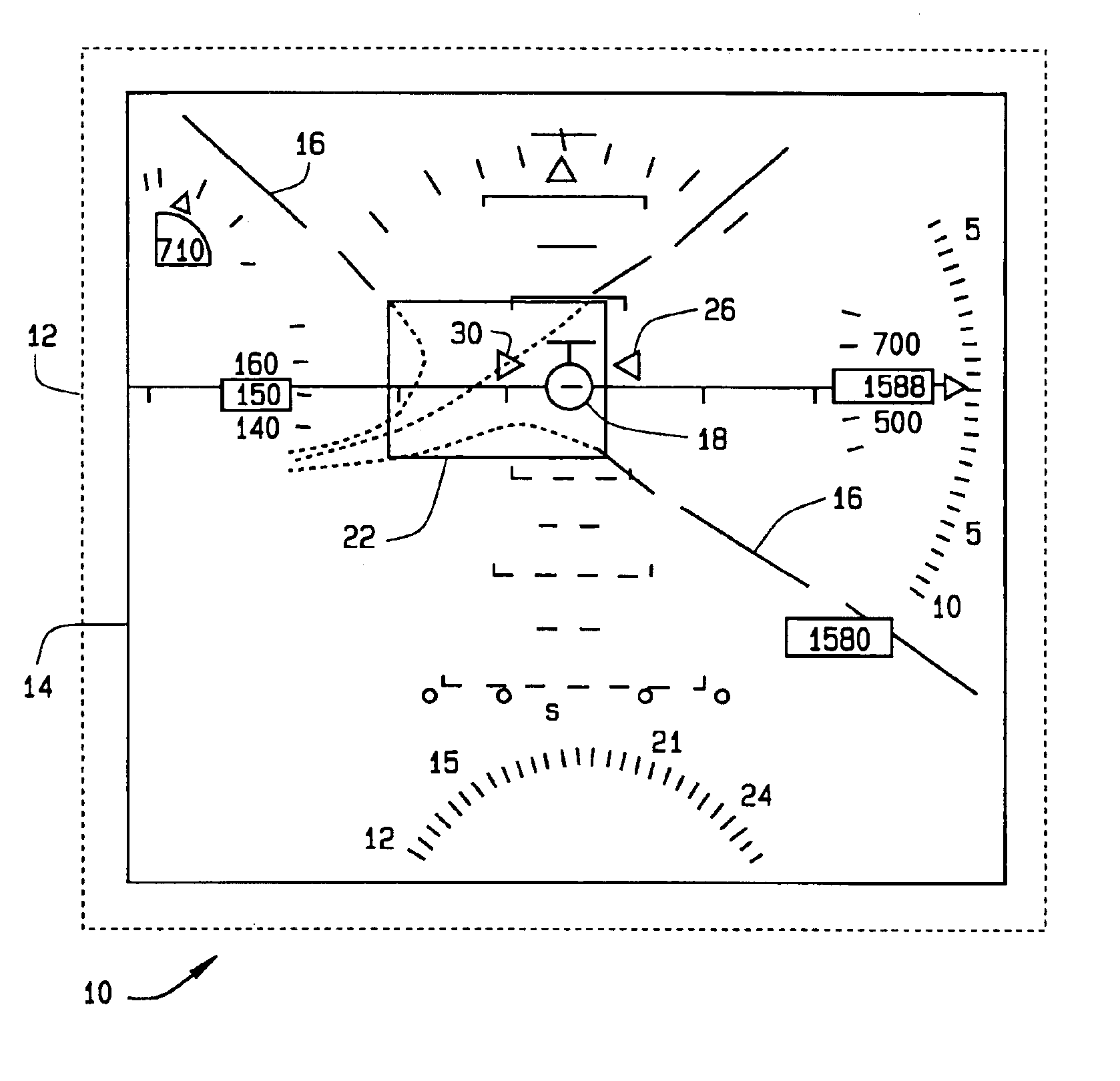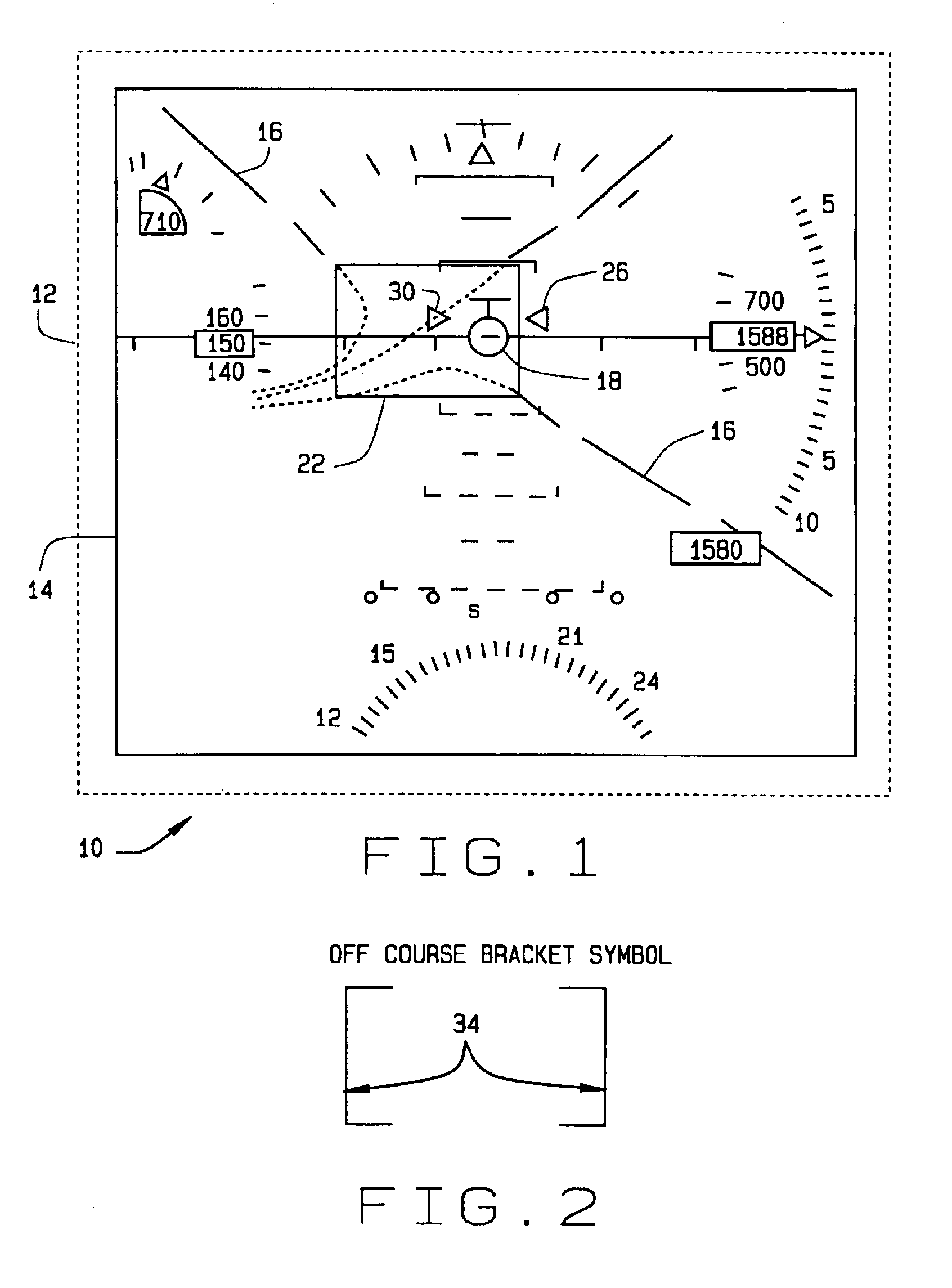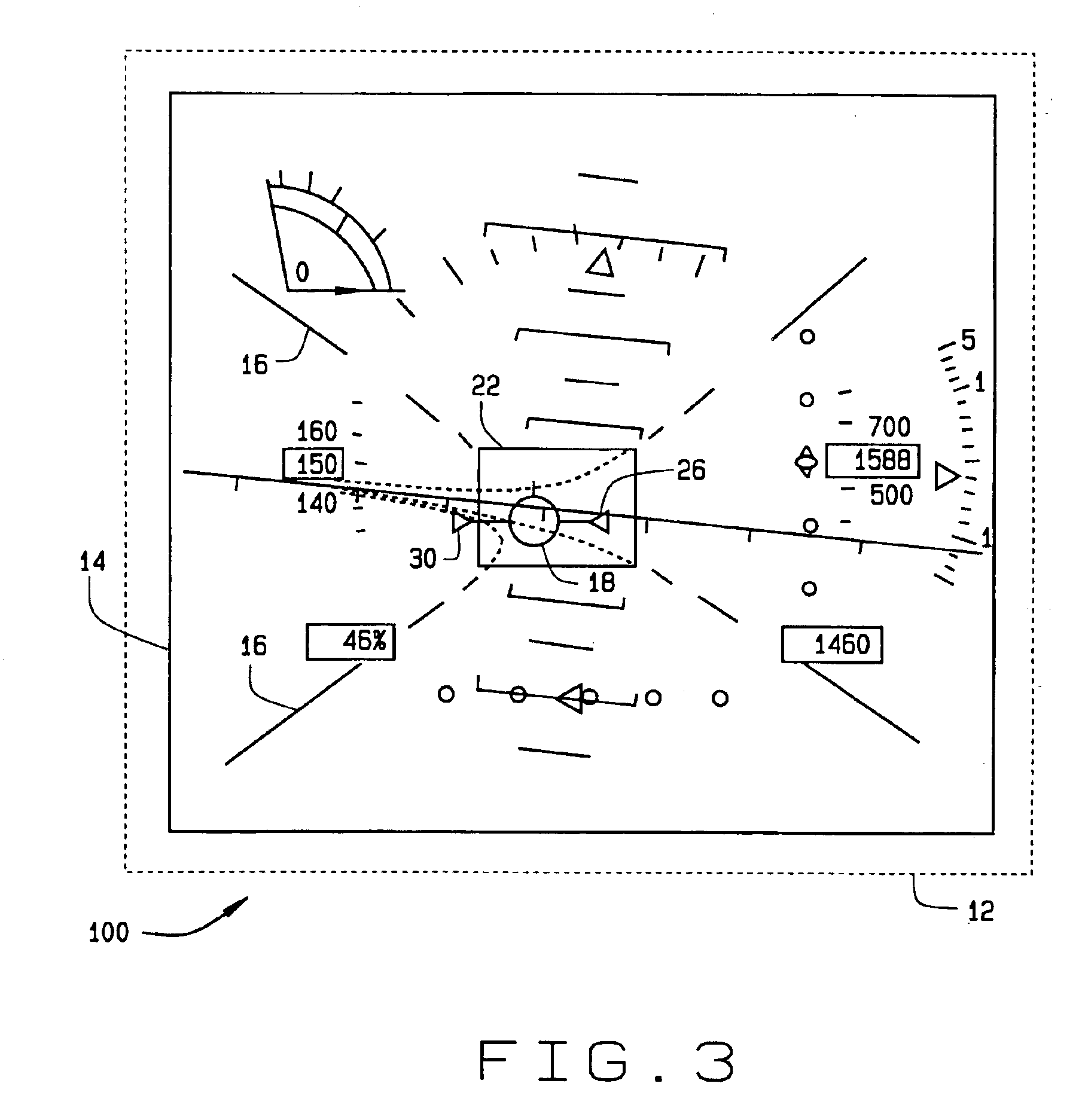Control system providing perspective flight guidance
a control system and flight guidance technology, applied in process control, navigation instruments, instruments, etc., can solve the problems of system operation, limited in the ability to display future flight path information, additional errors, etc., and achieve the effect of safe completion of the following/avoiding/tf/ta fligh
- Summary
- Abstract
- Description
- Claims
- Application Information
AI Technical Summary
Benefits of technology
Problems solved by technology
Method used
Image
Examples
Embodiment Construction
[0034]The following description of the preferred embodiments is merely exemplary in nature and is in no way intended to limit the invention, its application, or uses. Although the present invention is described in connection with specific systems operating to provide particular displays using specific information, it is not so limited, and the present invention may be provided in connection with other systems providing different or additional displays using different information.
[0035]Referring to FIG. 1, a graphical representation of a predictive flight path symbology system 10 in accordance with an exemplary embodiment of the present invention is shown. The system 10 includes a flight path vector (FPV) based precision pathway flight guidance (PFG) symbology set 12 and a pilot display 14 on which the PFG symbology set 12 is displayed. The PFG symbology set 12 includes an open tunnel bounded by broken tunnel lines 16 that provides flow field data, such as, for example a Boeing Phila...
PUM
 Login to View More
Login to View More Abstract
Description
Claims
Application Information
 Login to View More
Login to View More - R&D
- Intellectual Property
- Life Sciences
- Materials
- Tech Scout
- Unparalleled Data Quality
- Higher Quality Content
- 60% Fewer Hallucinations
Browse by: Latest US Patents, China's latest patents, Technical Efficacy Thesaurus, Application Domain, Technology Topic, Popular Technical Reports.
© 2025 PatSnap. All rights reserved.Legal|Privacy policy|Modern Slavery Act Transparency Statement|Sitemap|About US| Contact US: help@patsnap.com



